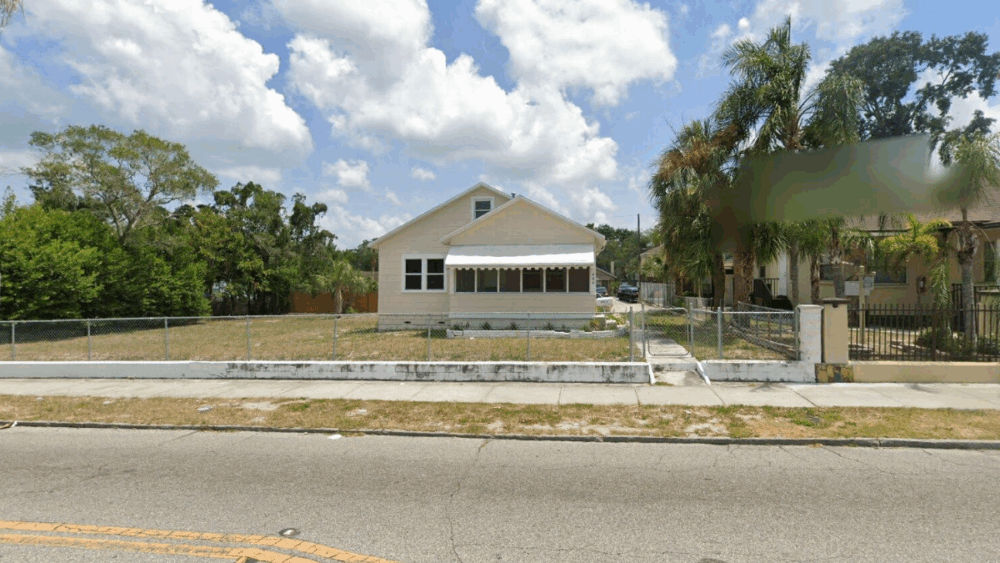For many young professionals in Tampa Bay, financial success is often defined by what can be seen: a high-rise apartment, weekends at the Edition pool and a lease payment that quietly swallows half their income.
But being rich is what you can see. Being wealthy is what you can’t. They are very different.
Real estate investor Clark Lunt calls it the illusion of arrival.
A co-host of the Burn Your Boats Wealth podcast, Lunt built his foundation not through flashy moves but through a series of disciplined, lower-cost home purchases in Tampa’s overlooked neighborhoods.

As his income grew, his strategy evolved, but his philosophy stayed the same: take action first, refine later. His advice to young earners is simple. Skip the luxury lease and buy the fixer-upper.
“All of this requires delayed gratification and living in probably C-plus or B-minus neighborhoods, so you won’t be having pool parties like you were renting at the Edition, but that’s okay,” Lunt said. “Let your buddies rent at the Edition and join them on the weekends while you build equity.”
READ: Sarasota growth continues as Kolter breaks ground on new apartments
Trading status for stability
Lunt’s approach is rooted in delayed gratification — giving up short-term comfort for long-term gain.
He encourages buyers to start with affordable homes in neighborhoods that have upside potential and rental demand. Live in them, improve them, then repeat.
He often points out that many people spend years waiting for perfect conditions to buy, missing opportunities that are already within reach. He believes that small, decisive steps — not market timing — separate those who build wealth from those who don’t.
“Time in the market, not timing the market,” he said.
The numbers behind the mindset
The math supports his view.
According to RentCafe’s 2025 Rental Market Report, the average rent for a two-bedroom apartment in Tampa is $2,180 per month. A Redfin mortgage analysis shows that the average monthly payment on a $250,000 home with 3.5% down and a 6.8% interest rate is about $2,050, including taxes and insurance.
In many cases, owning costs less than renting a comparable space.
READ: Inside the $12.7 million sale of Tampa’s Buccaneer Square
Starter homes in neighborhoods like Seminole Heights, Sulphur Springs and parts of Largo or Brandon still list under $300,000, according to Zillow’s Tampa Housing Market Report. Many have been on the market for more than 90 days — a signal, Lunt said, that buyers have leverage.
He recommends starting with a lender preapproval, then searching for homes that meet a few simple criteria: at least three bedrooms, listed under $300,000 and not marked “cash only.”
He then advises narrowing the list to three to five homes that have been sitting unsold for more than 90 days.
Once the shortlist is made, he suggests calling the listing agents directly. Ask what challenges the property has faced in selling. Often, a motivated seller will be open to negotiation, he said.
Out of five houses, he said, one will typically yield an opportunity. “The goal isn’t to find a perfect home,” he said. “It’s to find a foothold.”
Sweat equity and smart leverage
Lunt’s early strategy involved buying one home at a time, living in each and using roommates’ rent to cover most of the mortgage.
He repeated that process four times between ages 22 and 28 — a disciplined cycle of buying, fixing and renting.
By his 30s, he owned multiple cash-flowing properties and had built a foundation for his broader investment portfolio.
In one example, he bought a $250,000 home with about $15,000 down. After moving in, he found two roommates who each paid $900 a month, covering most of the $2,050 mortgage. Living affordably while the property appreciated allowed him to save and invest in his next home.
“The goal isn’t to get rich overnight,” Lunt said. “It’s to give yourself options.”
READ: Baker and Emily Mayfield just gave a Florida Gator the opportunity of a lifetime
He calls it a mindset of sweat equity, where effort and patience replace capital. Simple upgrades such as new paint, flooring or fencing can create value and improve rental appeal over time.
Scaling smart
Once the first property builds equity, Lunt encourages buyers to think beyond a single purchase.
He suggests looking for homes with an accessory dwelling unit, or ADU, in the back. Live in one and rent out the other, he said, and gradually improve both. When the front tenant moves out, switch units, fix it up and repeat.
Another approach, he said, is to buy a double lot with an existing home. Live in it, build equity and after several years, consider a construction loan to build a second property on the extra land.
One example currently for sale in St. Petersburg, 944 18th Ave. S, includes both a single-family home and an ADU on a double lot. Lunt said the property illustrates the kind of opportunity that can grow into generational wealth.
 A single-family home on 18th Avenue South in St. Petersburg illustrates the type of property investor Clark Lunt identifies as ideal for building equity and long-term wealth. Courtsey of Zillow.
A single-family home on 18th Avenue South in St. Petersburg illustrates the type of property investor Clark Lunt identifies as ideal for building equity and long-term wealth. Courtsey of Zillow.
“Live in one unit, rent the other unit out, let gentrification happen and in a few years take the equity as collateral to build on the other lot,” he said. “Always have three legs on the stool.”
Each approach, he said, rewards delayed gratification and hands-on learning.
Why it matters
Lunt’s approach focuses on finding communities on the cusp — areas with livable infrastructure, access to downtown or major employers and a growing population of renters.
He often looks for properties near university campuses, hospitals or redevelopment zones, which tend to attract consistent tenants and stable demand.
“It’s not about buying cheap,” he said. “It’s about buying smart.”
Tampa Bay’s median home price has climbed more than 45 percent since 2020, according to Florida Realtors’ 2025 Market Data. Yet demand from renters remains strong.
READ: Ceviche’s Tampa comeback shows why visibility is viability
For those willing to embrace modest beginnings, the window for building equity through entry-level properties still exists, but it’s narrowing.
Lunt believes that mindset, not market timing, determines who takes advantage.
“If you follow any of these tips at 25,” he said, “how well off do you think you will be by the time you’re 35? Would owning five or 10 houses by the time you’re 35 make a difference in your mindset, your network, your confidence, your legacy, your financial future? This is extremely doable through consistency of investing. It’s no different than being consistent on a diet or going to the gym. Do you exercise once a week and feel like you’re now immediately fit? Of course not. Investing is no different. It’s a consistent behavior with good days and bad days, but ultimately showing up is the most important thing. It’s not what you do, it’s that you do.”
The takeaway
For Tampa’s ambitious professionals, Lunt’s advice isn’t about austerity. It’s about agency.
Skip the luxury lease, buy the fixer-upper and trade short-term luxury for long-term freedom.
As he puts it, “The pool parties can wait — ownership can’t.”
Clark Lunt’s playbook for first-time investors
Get preapproved
Contact a local lender to understand how much you can afford and what your monthly payment will look like.
Set realistic parameters
Focus on homes under $300,000, with three bedrooms or more, that are not marked “cash only.”
Target overlooked neighborhoods
Look in areas such as Seminole Heights, Sulphur Springs, Largo and Brandon, where prices are still accessible and listings often sit for more than 90 days.
Leverage time on the market
Shortlist three to five homes that have been unsold for months, then call listing agents directly to learn why. Motivated sellers may be open to negotiation.
Live affordably while you build
Rent out extra rooms to cover part of the mortgage and invest the savings into upgrades or your next property.
Add value through sweat equity.
Focus on simple improvements — paint, flooring, landscaping or fencing — that boost curb appeal and rental potential.
Think beyond one property.
As equity builds, explore homes with ADUs or double lots where you can live in one unit and rent or develop the other.
Stay consistent
Treat investing like fitness — show up regularly, stay disciplined and let time in the market do the heavy lifting.
Stay Connected

